Mole
Most people have moles on their body, typically around 20. This is due to a group of skin cells called melanocytes or too much melanin.

Symptoms
A mole is a collection of melanocytes found in the skin’s dermo-epidermal junction or dermis. Junctional, mixed, and dermal moles are the three categories based on their location.
Classifications
Junctional Mole
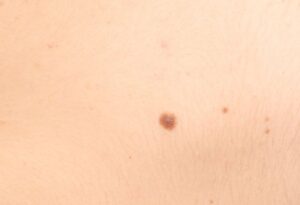
These moles are found where the skin’s top layer meets the second layer. They are typically flat and have a brownish-black hue.
Mixed Mole
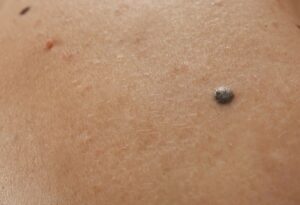
Mixed moles are brown to black bumps found where the skin’s top layer meets the second layer.
Dermal Mole
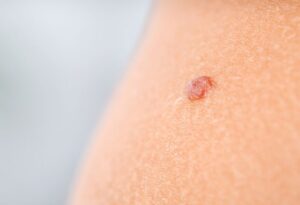
Skin moles are found in the skin’s dermis layer. They have a rounded shape and are typically flesh-colored, and some may have hair.
Morphology
Small mole
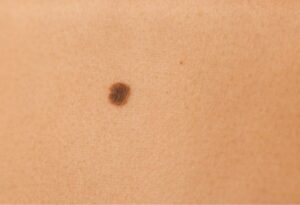
An ordinary, small mole.
Hairy mole
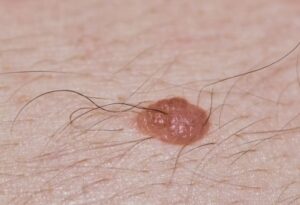
A mole that is slightly raised or has hair on it, or both.
Large mole
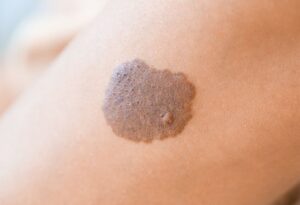
A mole with a large pigmented area. Darker moles are more likely to turn into melanoma.
Causes
The cause of moles is still uncertain, but there are several potential factors.
1.Genetics factors
Some people are more likely to have moles. Girls over 5 tend to have more spots in spring and summer, and fewer in autumn and winter.
2. Hormonal change
Hormonal changes can cause new moles to form during puberty, menstrual cycles, and pregnancy.
3. Extended exposure to the Sun
Extended time in the sun can create more melanin in the skin, protecting it from damage, but also darkening existing spots due to UV radiation.
4. Unhealthy lifestyle
Unhealthy habits like stress, poor diet, and lifestyle choices can gradually lead to the development of skin moles over time.
5. Mental health
Depression and emotional instability can cause increased melanin production in the skin, resulting in visible spots and moles.

Treatment
Laser is currently the least invasive treatment that can effectively remove a mole.
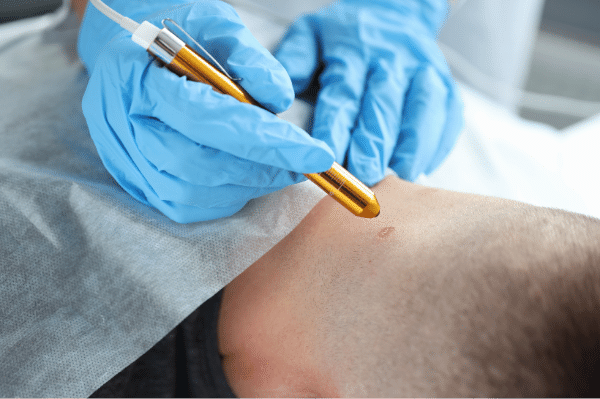
Our laser mole removal treatment at Skinspire Laser&Skin Clinic uses a high-energy laser beam to remove moles from the skin surface. The laser beam is absorbed by the water molecules in the skin, effectively removing the outer layer and promoting new skin and collagen growth.
How does Laser Mole Removal work
During laser moles removal, bursts of light radiation will be directed toward the mole, breaking down the skin cells it is comprised of. The precision of a laser treatment means that only the mole is removed, and surrounding tissue is left intact and healthy. Mole removal laser treatment time is minimal, with the removal of each mole taking only a few minutes.
Procedure
- 1. Face-to-face consultation: Skinspire Laser&Skin Clinic provider will develop unique treatment plan based on client’s condition and expectation.
- 2. Preparation: Skinspire Laser&Skin Clinic provider will apply anaesthetics externally, clean and disinfect the treatment areas and put on safety goggles.
- 3. Laser treatment: Skinspire Laser&Skin Clinic provider will complete the laser emission at the treatment area, and repeat steps in severe areas. The cooling effect from cold air outlets to cool down the skin surface.
- 4. Post-treatment: Skinspire Laser&Skin Clinic provider will apply aloe vera gel to soothe and calm down the treated areas.
Who is it for
- People who want to remove their mole, milia and acne
- People who want to reduce their syringoma, sebaceous hyperplasia, neoplasia and skin tag
- People who are suffering from age spots (seborrheic keratosis) or hyperkeratosis
- People who want to get rid of acne scars, traumatic scars, or chickenpox scars
